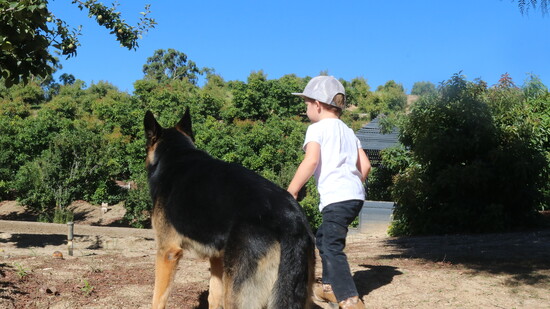What does it mean to socialize your dog? When we think about the concept of socializing dogs, playtime with other canines and strangers petting the dog comes to mind. While this may be a part of the process, socialization means much more than just playtime with dogs or people; it is exposing your dog to various people, real-world environments, sights, sounds and experiences to create a more confident, stable and well-rounded dog.
By socializing your dog in this way, you’ll build a more self-assured and confident dog. Exposing them to different environments will ease anxiety as they develop, mature and experience more challenges. This will build confidence in the dog and desensitize them to things that would otherwise eventually trigger stress and negative associations, which can lead to aggression and reactivity, so it is important to start as soon as possible. Socialization can begin at a very young age and continue into adulthood. Starting young will make it easier for the dog as they develop and mature while having fewer negative associations.
Some examples of how we socialize dogs include taking them to environments with a lot of stimulants (places with loud noises, groups of people and different distractions) while practicing obedience. Doing basic obedience (sit, down, place, heel) will disrupt any distractions while reinforcing focus on the handler and what the handler is working on, rather than the distractions around them, thus making the handler the satisfaction by marking the correct behaviors. This can be done using verbal praise as a reward from the handler or using a high value treat as a reward for the dog.
Training specifically to work on socialization can take place anywhere and at any time. Some examples would be taking your dog to hardware stores, shops, outdoor restaurants, new parks or simply walking in a new area or neighborhood. Randomizing your training will add many different stimulants that your dog can benefit from having to work through. When the dog is in these environments, have them work through obstacles that they seem to find stressful by doing their obedience around them. For example, a sound from a forklift in the hardware store may make a dog apprehensive; place the dog in a “down position” next to where the sound made them anxious until they are settled and focused on you. Then you may reward the dog.
Throughout training and socialization work, it is also important to remember that the goal of these exercises is to have the dog be accepting of people. It is not necessarily a time to be touched by a stranger. If you want to use verbal praise or treats as a reward, it should only be coming from the handler simultaneously with the command, when the dog’s behavior is correct. We do not recommend strangers petting your dog, as this may actually trigger a negative reactive response toward the stranger, however we do recommend training around people so that the dog becomes comfortable and confident.
Having the dog work through stressful scenarios, rather than just taking them out of the situation, when they are uncomfortable will help them cope better with fear and anxiety while building confidence! The more environmental exposure and obedience your dog experiences in these new environments, the more socially accepting and confident the dog will become!
Learn more at GoldCoastK9.com.
Exposing them to different environments will ease anxiety as they develop, mature and experience more challenges. This will build confidence in the dog.
